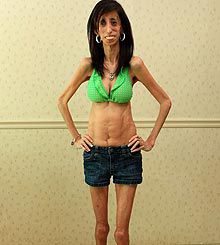研究:未保险的外伤病人比投保的更容易死亡
|
Trauma(外伤,创伤) patients without insurance are more likely to die of their injuries from auto accidents and gunshot wounds than privately insured patients with similar injuries, according to findings of an analysis of 193,804 patients from 649 facilities conducted by University Buffalo emergency medicine physicians. In addition, the authors found that Medicaid patients who were injured in motor vehicle accidents had a lower death rate than those with private insurance, indicating that factors other than the level of financial remuneration(报酬,赔偿) for medical services are influencing trauma outcomes. Patients covered by any of the insurance plans studied -- Medicaid, Medicare, private and managed care organizations such as HMOs -- had better mortality rates for all injuries than persons without insurance, the analysis showed. Results of the study were presented June 4 at the 2010 Society for Academic Emergency Medicine Annual Meeting in Phoenix, Ariz. Dietrich Jehle, MD, UB professor of emergency medicine and first author on the study, says these findings suggest that the causes of this difference are many and probably are not based just on quality of care. "Generally we don't know a trauma patient's insurance status when we treat them initially in the emergency department, which makes us ask if there are differences in these populations other than the delivery of care," says Jehle. "This finding was a little surprising. "Both race and insurance status are independent predictors(预报器) of mortality rates for trauma outcomes, and of the two, insurance status, specifically lack of coverage, is the most significant," he continues. "This is not unexpected, since uninsured adult patients in general have a 25 percent greater morality rate than insured adults for all medical conditions." Lack of insurance could influence mortality in a number of ways, notes Jehle. With no way to pay for care, persons may delay getting treatment. Those without insurance frequently are from ethnic groups who face language or literacy problems, and may be afraid to go to a hospital. Other factors could include differences in risk-taking behaviors. Studies have shown a relationship between not wearing seat belts and lack of health insurance, and that the uninsured are likely to drive older, less safe vehicles. In addition, says Jehle, people without insurance have poorer health status in general, which would lessen their ability to survive a traumatic injury, and they often are treated differently. "Research shows that, for other than trauma injuries, the uninsured may actually receive less aggressive treatment and fewer diagnostic procedures," he says. Universal health coverage could change these statistics, Jehle says. "For instance, there would be no need for patients to delay treatment with universal health coverage, and such coverage could improve the overall health status of injury victims and increase their survival rates." The study data was extracted from the National Trauma Data Bank for 2001-05. The researchers concentrated on patients between the ages of 18 and 30 to eliminate those more likely to have chronic(慢性的,长期的) health conditions, leaving 191,666 patients in the analysis with complete data, including 150,332 blunt(钝的,生硬的) trauma patients and 41,334 penetrating trauma patients. Blunt trauma patients were most commonly in motor vehicle accidents, with smaller subgroups(亚组) of patients with falls or assaults. The penetrating trauma patients included all gunshot wounds, plus small subgroups of injuries from stabbings(刺穿的,尖利的) . "If health care reform progresses," says Di |








